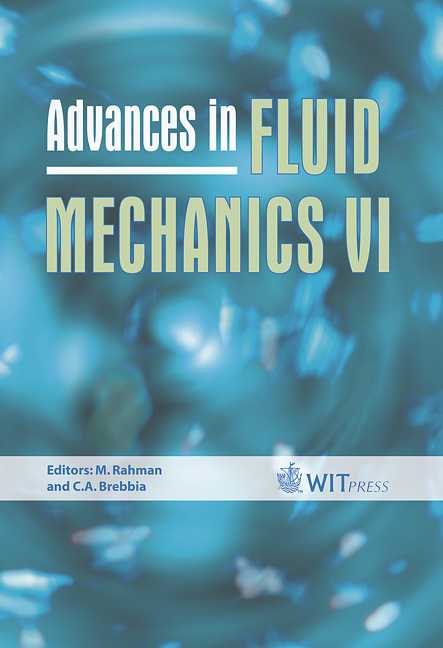Experimental Investigation Of Flow Through A Bileaflet Mechanical Heart Valve
Price
Free (open access)
Transaction
Volume
52
Pages
10
Published
2006
Size
572 kb
Paper DOI
10.2495/AFM060581
Copyright
WIT Press
Author(s)
J. Mejia & P. Oshkai
Abstract
Turbulent flow downstream of a bileaflet mechanical heart valve is investigated using digital particle image velocimetry. Evolution of flow structures during the systole and diastole phases of a typical cardiac cycle is characterized by obtaining global flow velocity measurements in multiple cross-sections of the flow field. Instantaneous and time-averaged patterns of flow velocity, vorticity, and streamline topology are used to illustrate the interaction between the unsteady vortices that results in elevation of shear stress levels. This imagebased approach can potentially lead to the development of methods for the control of platelet activation and provides insight into the underlying flow physics. Keywords: bileaflet mechanical heart valves, particle image velocimetry, in-vitro. 1 Introduction Currently, about 180,000 prosthetic heart valves are implanted each year worldwide, Yoganathan et al. [1]. Mechanical Heart Valves (MHVs) are relatively durable but strongly associated with thromboembolisms, which often result in ischemic attacks and stroke, Yin et al. [2]. It is believed that thrombi are caused by flow phenomena not characteristic of physiological conditions, Bluestien et al. [3]. The flow phenomena that receive the most attention in this respect include: jet-like flow regions, regions of elevated shear stress, flow separation regions, shed vortices, and turbulence characteristics, Yin et al. [2] Despite the recent advances in the field, thromboembolisms occur in
Keywords
bileaflet mechanical heart valves, particle image velocimetry, in-vitro.





